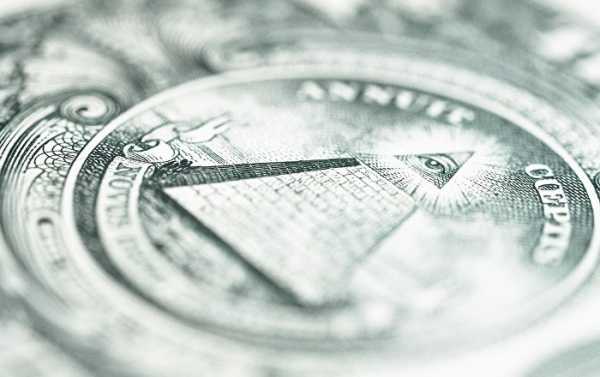
The Russian Central Bank has released a report on operations up to the first half of in 2018, showing that the US dollar’s share in Russia’s foreign exchange reserves dropped from 46 percent to less than 22 percent, while euro and yuan-denominated assets, as well as gold, grew substantially. Financial experts told Sputnik what caused the shift.
Russia dumped some $101 billion in US holdings from its reserves, moving $44 billion apiece into euros and yuan, and another $21 billion into Japanese yen, according to a Central Bank of Russia (CBR) report. Holdings of pound sterling, Canadian dollars, and Australian dollars also increased modestly.
The central bank’s euro reserves rose close by 7 per cent, from 25.1 per cent to 32 per cent of total reserves, while yuan assets increased to 14.7 per cent, up from just 5 per cent in the first quarter (Q1) of 2018. US dollar-denominated reserves, however, dropped by a whopping 24.4 per cent.
Geopolitical Risks Offset Economic Ones
The US dollar remains the world’s de facto reserve currency, with the yuan at risk of weakening or being devalued as the trade war with the US intensifies. Furthermore, according to Otkritie Broker JSC investment analyst Timur Nigmatullin, a drop in the dollar reduces the liquidity of Russia’s international reserves.
On the other hand, as he explained, the move also serves to reduce different risks, such as those stemming from the Federal Reserve’s tinkering with interest rates, as well as geopolitical factors.
According to the CBR’s report, between June 2017 and June 2018 the yuan provided the highest rate of return among foreign exchange assets, with its worth climbing by 3.2 per cent in that period. By comparison, the dollar yield’s was just 0.35 per cent over the same 12-month period.
“In any case, when forming the reserves portfolio, the Central Bank focuses not so much on return on investment, as it does a currency’s reliability against various risks. Presently, geopolitical risks are in the foreground, and the dollar here is the most dangerous currency,” Nigmatullin said.
Nearly a decade ago, when relations with the US were warmer, Russia invested some $176 billion into dollar-denominated assets. Since 2014, with the crisis in Ukraine, sanctions, and NATO’s buildup along Russia’s borders, relations have worsened, prompting the CBR to begin a gradual move away from the dollar, US bonds and other Washington-backed obligations.
Spring Cleaning
Last April, after Washington hit Moscow with another salvo of sanctions, the Central Bank began a speedy sell-off of US bonds, their share dropped from less than ten per cent of total reserves back in June to practically zero today.
Now, with the US Congress mulling a new batch of sanctions, this time possibly targeting dollar settlements by Russian banks, the Central Bank looking to take preemptive action.
“Why would the Central Bank want to hold a currency in its reserves which cannot be used? By shifting to the euro and the yuan, the Bank of Russia is insuring itself against sanctions risks,” Nigmatullin explained.
Furthermore, according to Alexander Rasuvayev, director of Alpari’s analytical department, reserve currency or not, there’s little point of holding a currency with a country you don’t trade with. “Unlike Europe and China, we do almost no trade with the US. Therefore, it’s necessary to have a volume of reserves in the European and Chinese currencies comparable to trade in order to maintain foreign trade turnover,” the analyst said.
US Market Weakness
There’s another, purely economic risk to holding dollars too, analysts warn, and that is the threat that the US stock market, which faced its worst decline since the Great Depression last month, may collapse again.
According to Sputnik contributor Natalya Dembinskaya, if the Fed managed to stamp out the 2008 financial crisis by flooding it with dollars under President Obama, it’s unclear whether it will do so again under President Trump. “In that case, the world may well break up into several currency zones, one of which will be the yuan,” she wrote.
In that sense, the CBR is “acting proactively, displacing the dollar and increasing its share of yuan-based reserves,” according to Dembinskaya.
The yuan’s influence is rising, with the International Monetary Fund (IMF) making it one of its reserve currencies in 2016, and Bank of England (BoE) Governor Mark Carney recently indicating that he saw the Chinese currency as a possible reserve asset amid the dollar’s instability.
Golden Goose
While reducing its holding of US assets, the Russian Central Bank has continued to build up its gold reserves, adding a record 92.2 tonnes in the third quarter of 2018, with total reserves now topping 2,000 tonnes, the equivalent of about $78 billion, and putting Russia squarely into fifth place globally behind the US, Germany, Italy and France.
Gold, Dembinskaya stressed, is an excellent way of holding value and diversifying risk. “In the event of a collapse of the dollar system, gold definitely won’t be depreciating,” she noted.
Furthermore, “while maintaining the function of a payment instrument in world trade, this asset weakens dependence on any currency,” she added. As a bonus, given that all of Russia’s gold is stored inside the country, no amount of machinations involving sanctions from the US or its allies could take the precious metal away in the event of an asset freeze crisis.
Sourse: sputniknews.com






